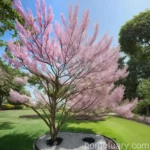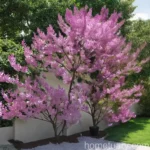All About Eastern Redbud (Cercis canadensis ‘Hearts of Gold’)
By [Your Name]
What is the Eastern Redbud?
The Eastern Redbud (Cercis canadensis ‘Hearts of Gold’) is a stunning ornamental tree known for its beautiful heart-shaped leaves and pinkish-purple flowers. This variety is especially cherished for its unique golden foliage, which offers a delightful pop of color in any landscape.
Key Takeaways
Before delving into the specific details about the Eastern Redbud, let’s explore the key takeaways associated with it:
- Elegant and unique golden foliage sets it apart from other varieties
- Hardy and adaptable, making it an excellent choice for various landscapes
- Attracts pollinators, providing ecological benefits to the ecosystem
- Low-maintenance and relatively disease-resistant
Now, let’s dive into the specifics of how to cultivate and care for this extraordinary plant.
Cultivation and Culture of Eastern Redbud
Uses
The Eastern Redbud tree is primarily used for ornamental and landscaping purposes, adding visual interest and color to gardens, parks, and urban spaces.
Water
Eastern Redbuds generally prefer moist, well-drained soil. Regular watering is essential during the initial stages of growth to help the tree establish a healthy root system. However, once established, they demonstrate good tolerance to drought conditions.
Sunlight
These trees thrive in full sun to partial shade, making them an excellent addition to a variety of landscape settings.
Fertilizer
A balanced, slow-release fertilizer is ideal for Eastern Redbuds, applied in early spring to support healthy growth and vibrant foliage.
Soil
Well-draining, slightly acidic soils are best suited for Eastern Redbuds. However, they show adaptability to various soil types, including clay and loam.
Pruning Eastern Redbuds
Proper pruning is essential to maintain the shape and promote healthy growth of Eastern Redbud trees. Pruning should be done in late winter or early spring when the tree is still dormant. This involves removing any dead, crossing, or crowded branches to improve air circulation and overall appearance.
Propagation
Eastern Redbud trees can be propagated from seeds or through softwood cuttings. However, it is important to note that seed-grown plants may not retain the exact characteristics of the parent tree.
Container Popularity
Eastern Redbuds are also suitable for container gardening, providing an opportunity to introduce their stunning beauty to smaller spaces such as patios and balconies.
Popularity of Eastern Redbud
The Eastern Redbud, particularly the ‘Hearts of Gold’ variety, has gained popularity among gardeners, landscapers, and nature enthusiasts due to its exceptional ornamental value and relatively low maintenance requirements. Its golden foliage sets it apart from the traditional green-leafed varieties, making it a sought-after addition to landscapes.
Common Diseases and Pests
Disease Diagnosis
While Eastern Redbuds are generally disease-resistant, they may occasionally be prone to Verticillium wilt, canker, or leaf spots. Adequate care in terms of watering, proper sanitation, and maintenance can help prevent these issues.
Common Pests
The Eastern Redbud is relatively resistant to pests. However, common pests such as caterpillars and aphids may occasionally be attracted to the tree. Neem oil or insecticidal soap can be used to treat pest infestations if they occur.
Botanist’s Tips
To ensure the optimum health and beauty of Eastern Redbud trees, consider the following tips:
- Regularly monitor soil moisture to ensure consistent hydration, especially during the initial growth period.
- Use a layer of mulch around the base of the tree to conserve soil moisture and suppress weed growth.
- Keep an eye out for signs of pests and diseases, intervening promptly if any issues arise.
Fun Facts about Eastern Redbuds
- The Eastern Redbud is the state tree of Oklahoma.
- The flowers of the Eastern Redbud are edible and can be used as a garnish in salads or desserts.
- Eastern Redbuds are known to attract a variety of pollinators, including bees and butterflies.
- Despite the name, the Eastern Redbud is not exclusive to the eastern region of North America and can be found as far west as Texas.
Links to External Resources
For further exploration and learning, here are some useful resources about the Eastern Redbud:
- The Spruce – Growing Eastern Redbud Trees
- University of Florida – Cercis canadensis: Eastern Redbud
- Missouri Botanical Garden – Cercis Canadensis
In conclusion, the Eastern Redbud (Cercis canadensis ‘Hearts of Gold’) is a remarkable tree that brings visual delight and ecological benefits to any landscape. Its unique golden foliage, low maintenance requirements, and adaptability make it a valuable addition to gardens, parks, and urban green spaces.
By understanding the specific care needs and characteristics of the Eastern Redbud, plant enthusiasts can successfully cultivate and enjoy the beauty of this exquisite tree. Whether in a garden bed or a container, the Eastern Redbud is sure to capture the hearts of all who encounter it.















